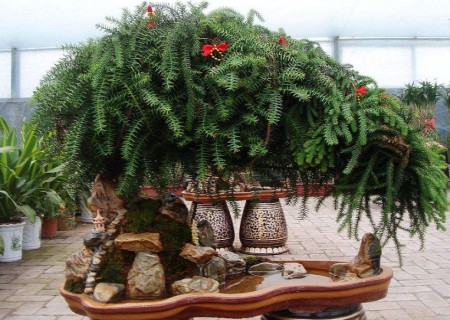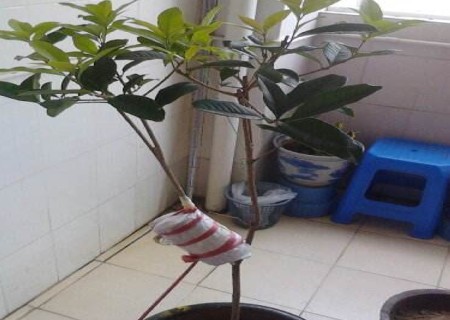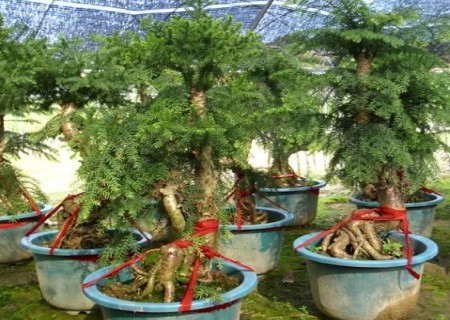How to trim Australian fir bonsai
Australian fir is a very powerful ornamental plant with strong vitality and is usually evergreen all the year round. It is also a good helper to purify the air, helping people to improve the air environment, so it is often suitable for indoor maintenance and warmth in the lack of light.
The large Australian fir bonsai is powerful, and the small one also has its ingenuity, so the ornamental value of Australian fir is inherent. Under normal circumstances, Australian fir does not need to be pruned to allow it to grow naturally. The suitable temperature for growth is 10-25 ℃, and the overwintering temperature is above 5 ℃. Overwintering season, can give a certain amount of light, basin soil can not be too dry, sunny weather should also spray water to increase humidity.

If the Australian fir grows too luxuriantly, it can be pruned properly according to your own hobby. Australian fir pruning can choose to stay in spring until April or May to change pots at the same time, and soon you can see new leaves that are tender green, with high ornamental value.
Australian fir is mostly used to make bonsai with roots and stones:
1, buy back to choose beautiful rocks, in which Lingbi stone weathering, water-absorbing stone maintenance plants, according to their own preferences to choose stones.
2. Move the Australian fir to the ground, or use a high flowerpot. Tidy up the roots and embed the stones. Pruning back to root, taproot, sickness and death root.
3. Tidy up the root system and tie it with cotton yarn close to the stone. Don't work too hard to avoid blocking the root absorption. The fill is buried in the rhizome.
4. Leave odd number of main branches at the top, such as three, five and seven, for banding and pruning, delaminating and separating primary and secondary.
5. After growing for a period of time, gradually peel off the soil layer and slowly reveal the root system, at this time the root system has firmly grasped the stone.
In this way, a beautiful bonsai of Australian cedar root with stone is completed.
Beginners, buy a pot of seedlings for two years or cuttings for two years, about 20-30 cm high, with a favorite basin, if you are interested in proper pruning, with an exquisite stone, dotted with one or two small furnishings, is a small and lovely bonsai of trees, which is elegant to watch indoors for a long time. If the economy permits, you can buy Australian shirts and stone bonsai for one or two hundred yuan.
Time: 2019-06-09 Click:
- Prev

The method of striping propagation of sweet-scented osmanthus
Striping propagation is to make use of the habit of branches to take root in contact with the soil, to bury a part of the branch or its stem in the soil to let it take root, and then divide it into independent plants. The striping method is one of many flower propagation, which buries the branches of the lower part of the mother plant into the soil.
- Next

How to reproduce Australian fir
Australian fir originated in the southeast coastal areas of Oceania, such as northern Australia, Guangdong and other provinces have been introduced and cultivated. Some cities in northern China began to introduce Australian fir bonsai in 2002 and are growing well. Cryptomeria fortunei is a very ornamental tree species, which is rated as one of the three ornamental trees in the world.
Related
- Fuxing push coffee new agricultural production and marketing class: lack of small-scale processing plants
- Jujube rice field leisure farm deep ploughing Yilan for five years to create a space for organic food and play
- Nongyu Farm-A trial of organic papaya for brave women with advanced technology
- Four points for attention in the prevention and control of diseases and insect pests of edible fungi
- How to add nutrient solution to Edible Fungi
- Is there any good way to control edible fungus mites?
- Open Inoculation Technology of Edible Fungi
- Is there any clever way to use fertilizer for edible fungus in winter?
- What agents are used to kill the pathogens of edible fungi in the mushroom shed?
- Rapid drying of Edible Fungi

